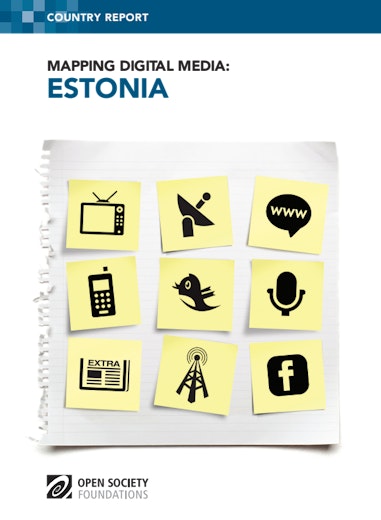The Mapping Digital Media project examines the global opportunities and risks created by the transition from traditional to digital media. Covering 60 countries, the project examines how these changes affect the core democratic service that any media system should provide: news about political, economic, and social affairs.
Estonia blazed a trail, in terms of digitization, by completing digital switch-over of television in 2010, five years ahead of the originally envisaged target of 2015.
Estonians have demonstrated a keen appetite for digital media uptake. More than three-quarters of the population accesses the internet regularly, and more than half of those are active on social networking platforms. Recent surveys suggest that nearly a quarter of internet users now connect via smartphones. As for traditional media, newspaper circulations have experienced a steady rather than dramatic decline over recent years, while television and radio audiences remain relatively stable.
The press and news organizations remain in general relatively free of political influence, and although there is significant cross-media ownership and little opportunity for new entrants, digitization does not appear to have exacerbated this situation, and there remains a degree of competition and pluralism within all sectors.
This report calls for the development of media policy that will incentivize television service providers to introduce the additional digital television services that were promoted during switch-over. They also call for long-term predictable funding mechanisms to ensure that public service media, Estonian Public Broadcasting (Eesti Rahvusringhääling, ERR) above all, provide quality output.
Download
-
Mapping Digital Media: Estonia (1.06 Mb pdf file)
Download the complete 87-page report.
Read more
Voices
What Does Independent Journalism Look Like in the Digital Age?

Journalists and media organizations can find themselves repressed because of inadequate or deliberately repressive policy. Mapping Digital Media examines the situation in 56 countries.
Voices
Does Digital Media Mean Better Media?
From Montenegro to Nicaragua to China to Egypt, has digital media improved access to good-quality journalism?
Voices
Early Days for Digital Media in Morocco
Digital media in Morocco continues to advance. With 105 percent mobile phone penetration in the country and a growing appetite for online news more change is on the way.
